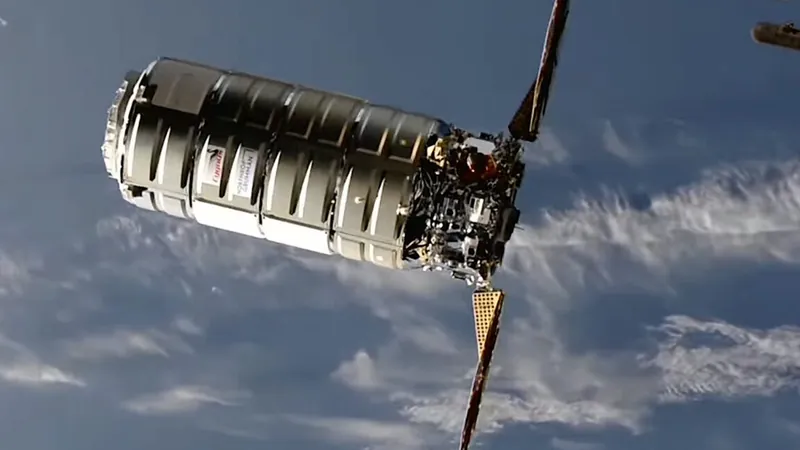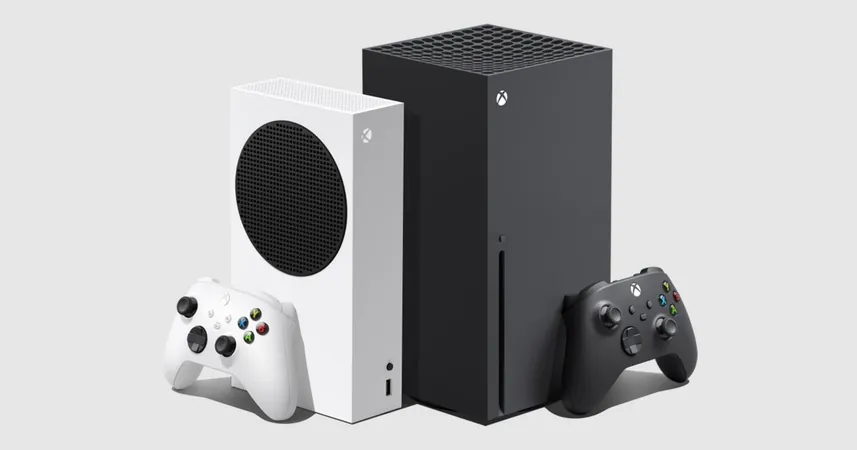
Northrop Grumman Triumphs with Successful ISS Resupply After Software Glitch
2025-09-18
Author: Wei
In a thrilling turn of events, Northrop Grumman's Cygnus XL cargo freighter successfully docked with the International Space Station after a brief setback. Despite a one-day delay, the spacecraft delivered over 5 tons of vital supplies and scientific experiments to the seven-member crew aboard the ISS.
NASA astronaut Jonny Kim skillfully controlled the robotic arm to capture the Cygnus spacecraft at precisely 7:24 AM EDT on Thursday. Moments later, the robotic arm positioned the spacecraft securely against the Unity module of the space station, with 16 bolts providing a robust seal.
The Cygnus XL is scheduled to remain at the ISS for an impressive six months, during which astronauts will unload its valuable cargo and use the module to store trash for later disposal. When the time comes, the spacecraft will make a fiery reentry into the Pacific Ocean, marking the end of its mission.
Navigating the Glitches
The commercial resupply mission kicked off perfectly with an on-time launch from Cape Canaveral, Florida, thanks to a SpaceX Falcon 9 rocket. However, the journey hit a snag early Tuesday when the spacecraft’s main engine unexpectedly shut down during critical maneuvers.
NASA announced the potential delay, attributing the premature engine stoppage to onboard software designed to prevent malfunction. Fortunately, the engine itself was functioning correctly, and the issue stemmed from a conservative safety protocol.
After tweaking the software parameters, the Cygnus spacecraft successfully navigated to just 30 feet from the ISS, allowing Kim to take control and dock the vehicle.
What's Inside the Cygnus XL?
This mission marks the debut of Northrop Grumman's enhanced Cygnus XL, boasting a cargo module that is 5.2 feet longer than its predecessor, allowing it to carry 33% more cargo. This time around, the total haul amounts to a staggering 10,827 pounds.
Included in the cargo are essentials like food, oxygen, nitrogen, and crucial spare parts for the station’s urine processor—an innovative system that transforms waste into fresh drinking water. Additionally, the Cygnus delivered a new navigation aid designed to enhance the docking precision of future crewed and cargo missions.
Among the scientific equipment aboard, there’s hardware for investigating the production of semiconductor crystals in the unique environment of microgravity, alongside experiments showcasing new methods for maintaining cryogenic propellants during extended space missions.
A Bright Future in Space
As we look to the stars, Northrop Grumman's recent success not only underscores the resilience of space technology but also sets the stage for exciting advancements. The Cygnus XL mission opens new doors for research and exploration, fueling our quest to unravel the mysteries of the universe.




 Brasil (PT)
Brasil (PT)
 Canada (EN)
Canada (EN)
 Chile (ES)
Chile (ES)
 Česko (CS)
Česko (CS)
 대한민국 (KO)
대한민국 (KO)
 España (ES)
España (ES)
 France (FR)
France (FR)
 Hong Kong (EN)
Hong Kong (EN)
 Italia (IT)
Italia (IT)
 日本 (JA)
日本 (JA)
 Magyarország (HU)
Magyarország (HU)
 Norge (NO)
Norge (NO)
 Polska (PL)
Polska (PL)
 Schweiz (DE)
Schweiz (DE)
 Singapore (EN)
Singapore (EN)
 Sverige (SV)
Sverige (SV)
 Suomi (FI)
Suomi (FI)
 Türkiye (TR)
Türkiye (TR)
 الإمارات العربية المتحدة (AR)
الإمارات العربية المتحدة (AR)